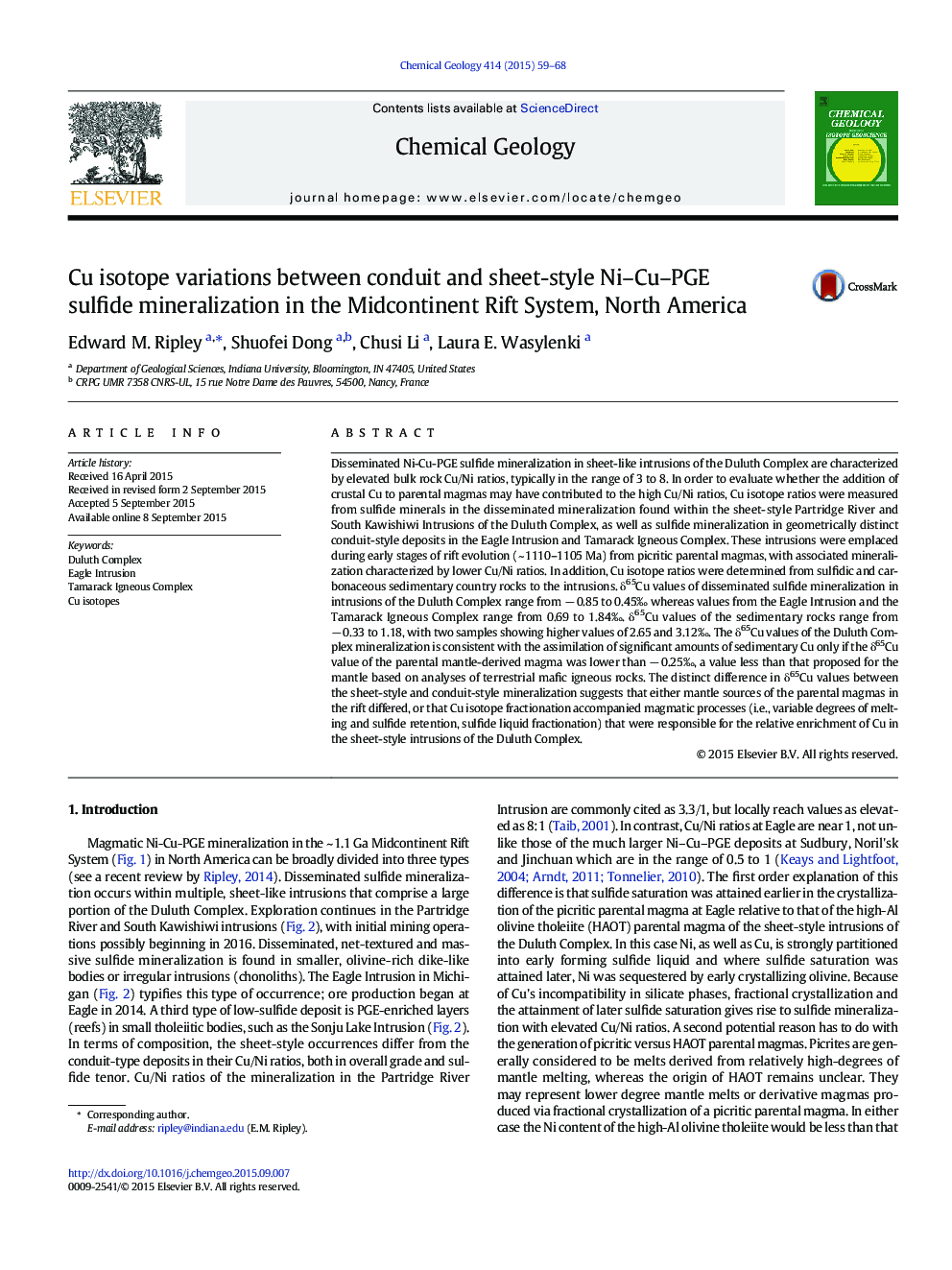| Article ID | Journal | Published Year | Pages | File Type |
|---|---|---|---|---|
| 4698450 | Chemical Geology | 2015 | 10 Pages |
•Cu isotope ratios were measured from sulfide minerals in the Partridge River and South Kawishiwi Intrusions, as well as in the Eagle Intrusion and Tamarack Igneous Complex.•In addition, Cu isotope ratios were determined from sulfidic and carbonaceous sedimentary country rocks to the intrusions.•δ65Cu values of mineralization in intrusions of the Duluth Complex range from − 0.85 to 0.45‰.•Values from the Eagle Intrusion and the Tamarack Igneous Complex range from 0.69 to 1.84 o/oo.•Either mantle sources of the parental magmas in the rift differed, or Cu isotope fractionation accompanied magmatic processes.
Disseminated Ni-Cu-PGE sulfide mineralization in sheet-like intrusions of the Duluth Complex are characterized by elevated bulk rock Cu/Ni ratios, typically in the range of 3 to 8. In order to evaluate whether the addition of crustal Cu to parental magmas may have contributed to the high Cu/Ni ratios, Cu isotope ratios were measured from sulfide minerals in the disseminated mineralization found within the sheet-style Partridge River and South Kawishiwi Intrusions of the Duluth Complex, as well as sulfide mineralization in geometrically distinct conduit-style deposits in the Eagle Intrusion and Tamarack Igneous Complex. These intrusions were emplaced during early stages of rift evolution (~ 1110–1105 Ma) from picritic parental magmas, with associated mineralization characterized by lower Cu/Ni ratios. In addition, Cu isotope ratios were determined from sulfidic and carbonaceous sedimentary country rocks to the intrusions. δ65Cu values of disseminated sulfide mineralization in intrusions of the Duluth Complex range from − 0.85 to 0.45‰ whereas values from the Eagle Intrusion and the Tamarack Igneous Complex range from 0.69 to 1.84‰. δ65Cu values of the sedimentary rocks range from − 0.33 to 1.18, with two samples showing higher values of 2.65 and 3.12‰. The δ65Cu values of the Duluth Complex mineralization is consistent with the assimilation of significant amounts of sedimentary Cu only if the δ65Cu value of the parental mantle-derived magma was lower than − 0.25‰, a value less than that proposed for the mantle based on analyses of terrestrial mafic igneous rocks. The distinct difference in δ65Cu values between the sheet-style and conduit-style mineralization suggests that either mantle sources of the parental magmas in the rift differed, or that Cu isotope fractionation accompanied magmatic processes (i.e., variable degrees of melting and sulfide retention, sulfide liquid fractionation) that were responsible for the relative enrichment of Cu in the sheet-style intrusions of the Duluth Complex.
